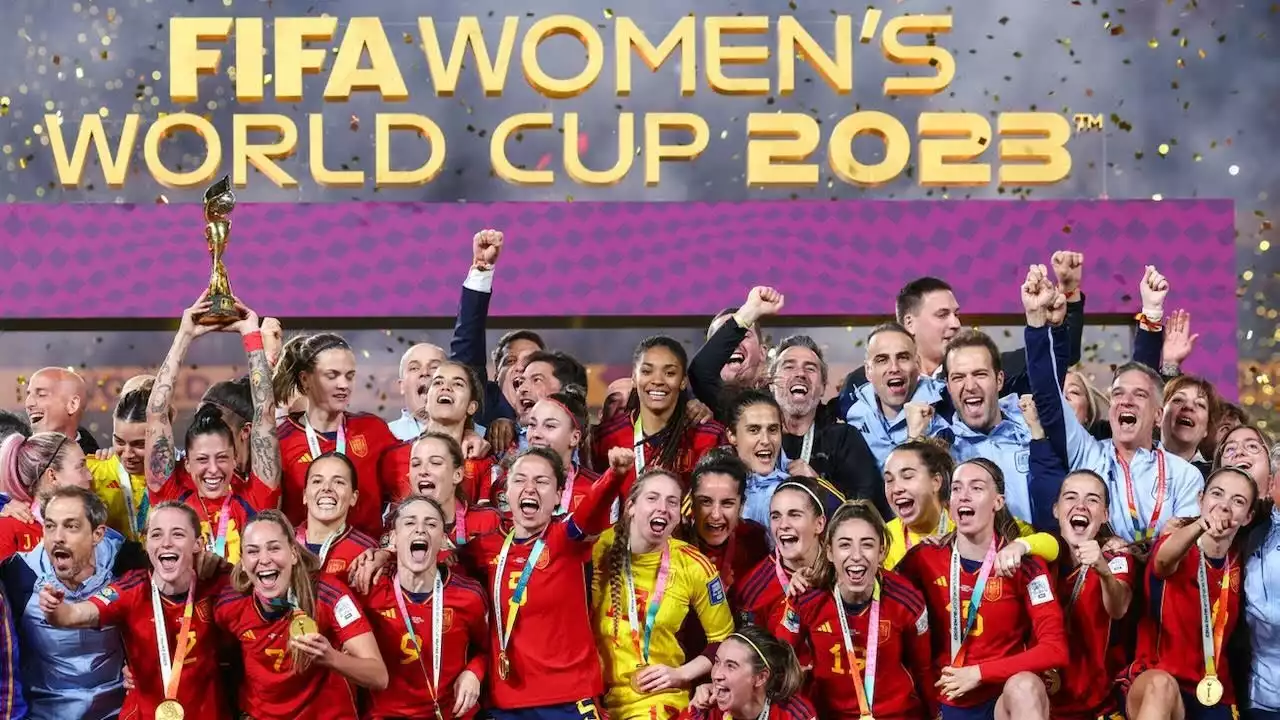Decision 1: The establishment of organized women's football leagues
The first key decision that had a profound impact on the growth of women's football was the establishment of organized women's football leagues. Prior to this, women's football was largely unstructured, with matches being played informally and without proper regulation. However, the creation of dedicated leagues provided a platform for female players to showcase their skills and compete at a higher level.
These leagues not only offered opportunities for women to play professionally but also helped attract more spectators and generate interest in the sport. By providing a structured framework, women's football leagues laid the foundation for the development and growth of the game, enabling aspiring players to pursue their dreams and inspiring future generations of female footballers.
With the creation of leagues, women's football began to gain recognition and respect, challenging the preconceived notions that football was a sport exclusively for men. This decision marked a significant turning point in the history of women's football, setting the stage for further advancements and opportunities for female athletes.
Decision 2: Increased investment and sponsorship in women's football
Another crucial decision that played a vital role in the growth of women's football was the increased investment and sponsorship in the sport. In the past, women's football struggled to secure financial backing and support, which hindered its progress and limited its reach.
However, as awareness and interest in women's football grew, so did the willingness of sponsors and investors to get involved. Recognizing the potential of the sport, companies began to allocate resources and funds to support women's football, providing much-needed financial stability and opportunities for growth.
With increased investment, women's football was able to improve infrastructure, enhance training facilities, and provide better resources for players. This allowed female athletes to develop their skills and compete at a higher level, narrowing the gap between men's and women's football.
Moreover, sponsorship deals provided exposure and visibility for women's football, helping to build a fan base and attract new audiences. By securing support from sponsors, women's football gained credibility and legitimacy, further fueling its growth and popularity.
Decision 3: Equal pay and professionalization of women's football
One of the most significant decisions that had a profound impact on women's football was the movement towards equal pay and professionalization of the sport. For many years, female footballers faced unequal treatment and were often paid significantly less than their male counterparts.
However, as awareness of gender inequality in sports grew, there was a collective push for change. Female athletes, advocates, and fans demanded equal pay and recognition for their contributions to the sport, leading to a shift in attitudes and policies.
In recent years, there have been significant strides towards equal pay in women's football. Major football organizations and clubs have made commitments to bridge the pay gap, ensuring that female players receive fair compensation for their talent and hard work.
The professionalization of women's football has also played a crucial role in its growth. As more leagues and teams transitioned into professional setups, female players were able to dedicate themselves fully to the sport, accessing better training, coaching, and resources.
The decision to prioritize equal pay and professionalization has not only provided financial stability for female footballers but has also elevated the status of women's football, attracting more talent and inspiring young girls to pursue their dreams in the sport.
Decision 4: Broadcasting and media coverage of women's football
Another key decision that significantly influenced the growth of women's football was the increased broadcasting and media coverage of the sport. In the past, women's football received limited airtime and media attention, which hindered its visibility and popularity.
However, with the advent of digital platforms and the growing demand for diverse sports content, there has been a shift in the coverage of women's football. Broadcasters and media outlets have recognized the untapped potential of the sport and have invested in showcasing women's football to a wider audience.
The increased visibility through broadcasting and media coverage has not only brought more attention to women's football but has also helped change public perceptions. By showcasing the skill, athleticism, and excitement of the game, women's football has shattered stereotypes and gained recognition as a legitimate and thrilling sport.
Furthermore, media coverage has provided female footballers with role models and icons, inspiring young girls to pursue their passion for football and showing them that they too can achieve greatness in the sport. The increased exposure has also attracted new fans, sponsors, and investment, contributing to the growth and development of women's football.
Decision 5: Hosting major international tournaments for women's football
The final decision that had a significant impact on the growth of women's football was the decision to host major international tournaments exclusively for women. Historically, international tournaments were primarily focused on men's football, with little attention given to women's competitions.
However, the inclusion of women's football in major international tournaments, such as the FIFA Women's World Cup and the UEFA Women's Euro, marked a milestone in the sport's history. These tournaments provided a global stage for female players to showcase their skills and compete at the highest level.
The hosting of these tournaments not only increased the visibility and popularity of women's football but also helped to legitimize the sport on an international scale. It provided an opportunity for female athletes to represent their countries, fostering national pride and inspiring future generations of female footballers.
Moreover, hosting major international tournaments also required investment in infrastructure and facilities, leaving a lasting legacy for women's football in the host countries. This investment, coupled with the exposure and excitement generated by these tournaments, has contributed to the continued growth and development of women's football worldwide.
Impact of these decisions on the growth of women's football
The five key decisions discussed above have had a profound impact on the growth of women's football. The establishment of organized women's football leagues, increased investment and sponsorship, equal pay and professionalization, broadcasting and media coverage, and hosting major international tournaments have collectively propelled women's football into the spotlight.
These decisions have not only provided opportunities for female athletes but have also inspired millions of women and girls around the world to pursue their passion for football. The increased visibility, recognition, and support for women's football have shattered gender stereotypes and created a more inclusive and equitable sporting landscape.
Moreover, the growth of women's football has had a ripple effect on society, empowering women and promoting gender equality both on and off the field. The success and achievements of female footballers have become a source of inspiration, encouraging women to break barriers, challenge norms, and pursue their dreams in all aspects of life.
The impact of these decisions is evident in the growing participation rates, increased fan base, and global recognition of women's football. As the sport continues to evolve and progress, there are bound to be more transformative decisions on the horizon, further solidifying women's football as a force to be reckoned with.
Challenges and obstacles faced by women's football
While the growth of women's football has been remarkable, it has not been without its challenges and obstacles. Women's football has had to overcome societal prejudices, unequal treatment, and limited resources that have hindered its progress.
One of the significant challenges faced by women's football is the lack of investment and financial support compared to men's football. Despite the strides made in recent years, women's football still receives significantly less funding, sponsorship, and media coverage than its male counterpart.
Additionally, gender stereotypes and societal norms have presented barriers for women in football. The perception that football is a male-dominated sport has led to limited opportunities, lower salaries, and unequal treatment for female players. Breaking down these stereotypes and challenging gender norms remains an ongoing battle for women's football.
Furthermore, the lack of infrastructure and resources in certain regions has posed challenges for the development of women's football. In many countries, women's football is still not given the same level of support and investment as men's football, limiting the growth and potential of the sport.
Despite these challenges, women's football has shown resilience and determination, continuously pushing boundaries and demanding change. Through advocacy, grassroots initiatives, and the dedication of individuals and organizations, women's football continues to overcome obstacles and make strides towards a more inclusive and equitable future.
Future prospects and opportunities for women's football
The future of women's football is bright, with numerous prospects and opportunities on the horizon. The progress made in recent years has set the stage for further growth and development of the sport.
Increased investment, sponsorship, and media coverage will continue to play a vital role in expanding the reach and visibility of women's football. As more companies and broadcasters recognize the value and potential of the sport, we can expect to see greater resources and support being allocated to women's football.
Furthermore, the professionalization of women's football will continue to gather momentum, providing female players with the infrastructure, resources, and training needed to compete at the highest level. This will help bridge the gap between men's and women's football and elevate the overall quality of the game.
The hosting of major international tournaments will also create additional opportunities for women's football to shine on a global stage. As more countries invest in hosting these tournaments, it will provide a platform for female athletes to showcase their skills and inspire the next generation of players.
Moreover, grassroots initiatives and the development of youth programs will be crucial in nurturing young talent and ensuring the long-term sustainability of women's football. By providing opportunities for girls to participate in football from a young age, we can cultivate a strong foundation for the sport and tap into the immense potential of female athletes.
As we look towards the future, it is clear that women's football has the potential to continue its upward trajectory, challenging norms, and engraving its place in sporting history. With each passing year, the growth and progress of women's football serve as a testament to the resilience, talent, and determination of female athletes around the world.









